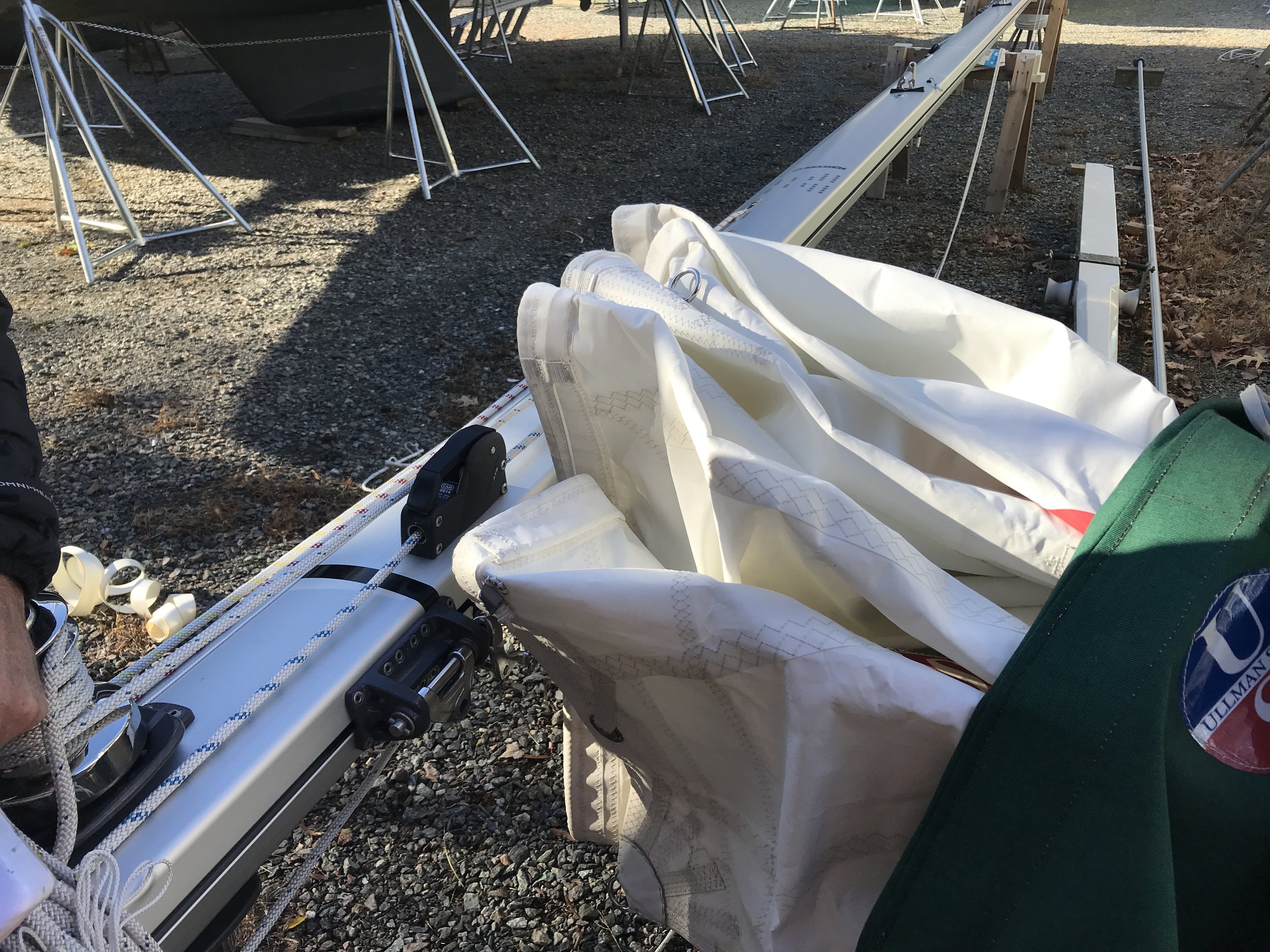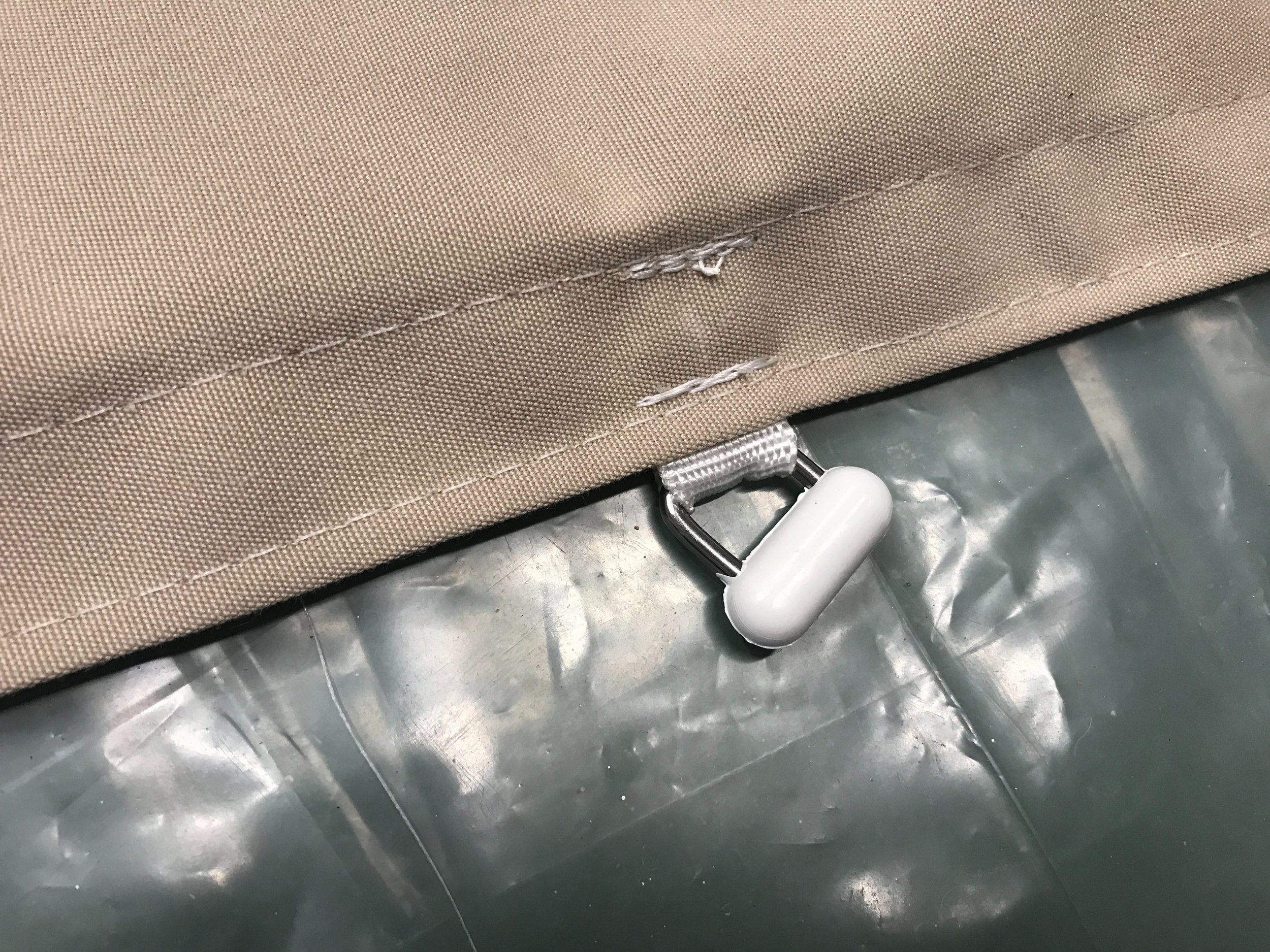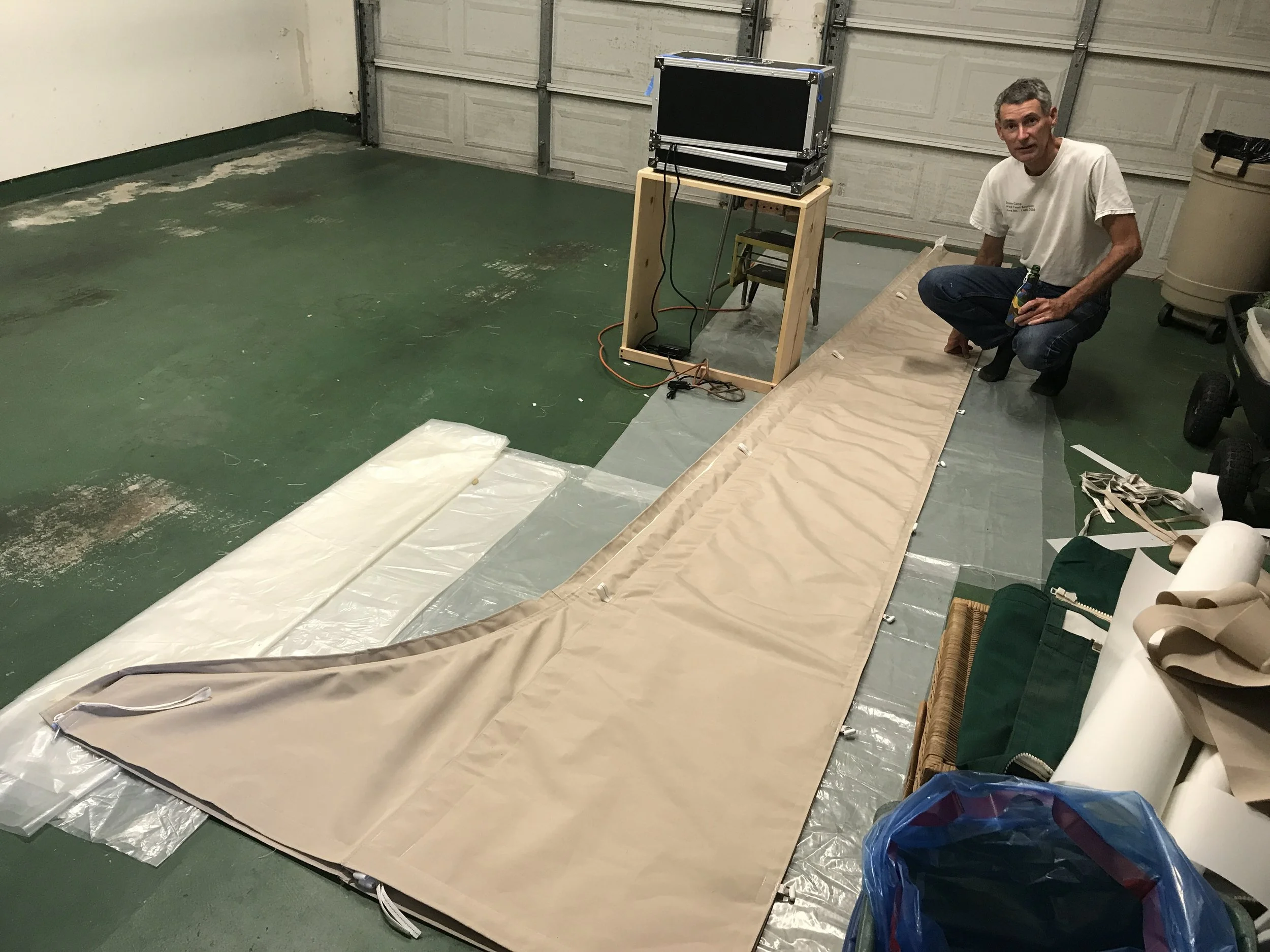Contemplating the Stack Pack
Actually, that title is a lie. We’re well beyond the contemplation stage; Jeremy is about 99% of the way through constructing the stack pack for Calypso.
Garage/canvas shop. Yes, we brought the sewing machine with us to Texas!
A little background. A stack pack is a form of a sail cover, one that stays permanently on the boom. It’s held open by the lazy jacks and means there is no cover to take off or put back on - which also means there’s no cover to store away while you’re sailing. Since sails are subject to UV degradation, and a new sail (for our small boat) runs on the order of $2000, covering the sail is a prudent notion.
2 kinds of sail covers; the stack pack is the blue one in the background.
Canvas work is one of those extremely cost-efficient DIY boat projects. If you have the time, that is. Which we do, especially while we’re in Texas and the boats are in Virginia. We figured out that this one project, once finished, will have more than paid for the sewing machine.
Back to the stack pack. Sailrite (the sewing machine company) has some great videos on stack pack construction. We have the stack pack from Mischief. None of those is exactly right for what we want, though, so Jeremy had some decisions to make. This project is yet another boat project that benefitted from time in the thinking chair. What decisions?
Dimensions. Measuring the length of the sail (we brought that with us too), the height of the tack on the mast (a bit of an exercise as the mast is on the ground), and figuring the circumference of the folded sail (same challenging exercise with the rig down)
Make-shift measuring “up” the mast, no boom attached.
How to shape the area around the head of the sail. Jeremy’s a stickler for aesthetics. It’s relatively easy to make an overly large stack pack that’s kind of a non-rectangular quadrilateral (the Sailrite video uses this design) but this doesn’t look good, in our opinion. Figuring out how to keep a low profile that mimics the shape of the mainsail is important.
How to attach the stack pack to the boom. The current mainsail is attached to the boom with slides; when we replace the sail, we’re likely to opt for a loose-footed main. We don’t want to drill any holes in the boom for fastening. Options include strapping the stack pack between the boom and the mainsail or putting slides on the stack pack.
Slides it is!
How to attach the lazy jacks to the stack pack. These lines lead up the mast and act as guidelines for the main as it comes down. Options here include threading the lazy jacks through the stack pack and attaching the lazy jacks to the boom, attaching the lazy jacks to the battens that form the stiff upper edge of the stack pack, or rigging some other attachment point. One thing to consider is how we’ll rig the awning when we need it.
An old photo but concept remains. The awning goes over the boom!
How to cover the front of the sail. This is the least straightforward of the decisions. The front of the sail needs to be covered. The sides of the mast need to be accessible for sail handling. Making some complicated removable flap defeats the “let’s make sail covering easy and a no-brainer” aspect of the stack pack upgrade. This question has sent us marina-walking, looking to see if there is a consistent answer in commercial designs. That’s a hard no, though we saw lots of examples of “WTF were they thinking” solutions. The benefit with realizing there’s no standard front-of-the-mast solution is that we can be pretty sure we’re okay just trying something of our own design.
All decisions except the last have been made - right now the “how to cover the front of the sail” one is on hold until we re-rig and can test fit the sail on the mast and boom. At the moment Jeremy is thinking he’ll just do a zippered panel that affixes at the starboard side and is semi-permanently fixed on port; all our sail-handling is done at the mast anyway, so a zipper on that side is not a huge impediment.
Merry Christmas, Calypso! One beautification project is largely done!
Ta dah!






